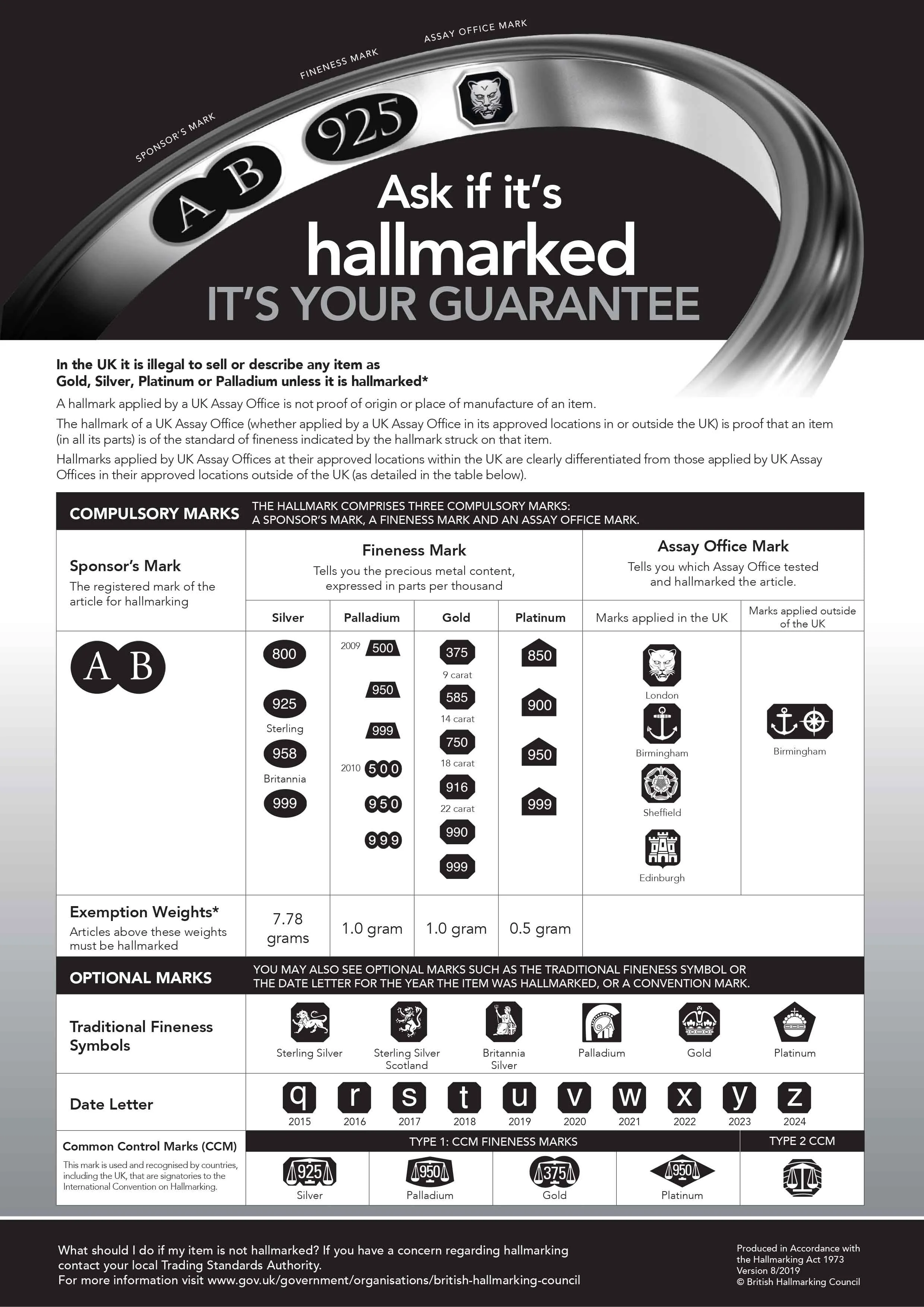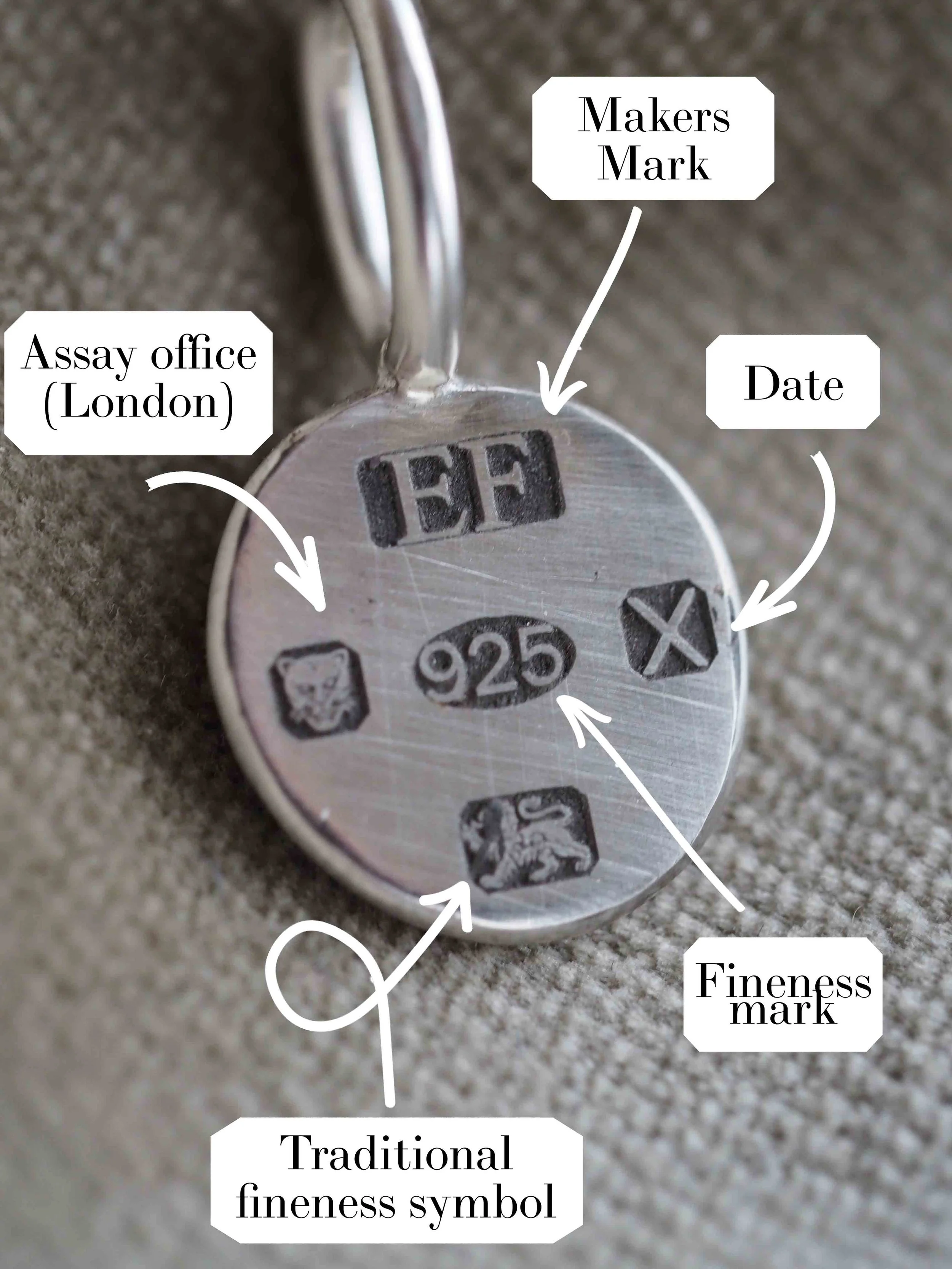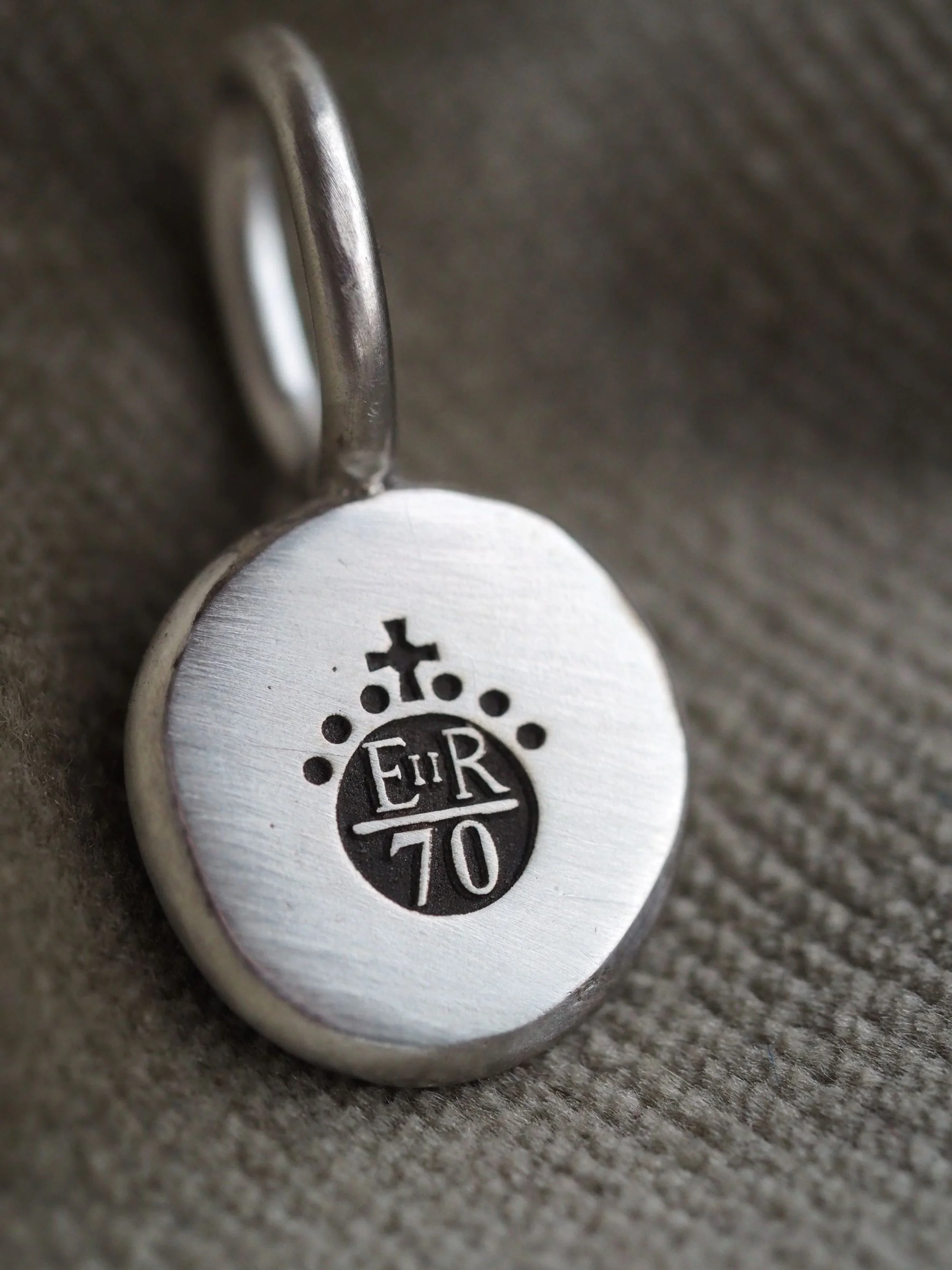Hallmarking
The practice of hallmarking in the UK goes back to the 1300s, when precious metals were first tested and hallmarked. A British hallmark is a guarantee that the item which bears the mark, is what it says it is. The UK is the only country in the world where all precious metal items must be independently tested and hallmarked. Though there are plenty of other countries around the world which hallmark.
Any item sold in the UK that is described as sold ‘gold’, ‘silver’, or ‘platinum’ that is above a certain weight must carry a hallmark. A hallmark is a series of marks that communicate information about the piece, including the purity of the metal, the maker, as well as when and where it was hallmarked.
Hallmarking takes place at an assay office and there are four assay offices in the UK: London, Birmingham, Sheffield, and Edinburgh. Each assay office is a separate, independent entity, but they are all overseen by the British Hallmarking Council.
When a piece is sent to an assay office, the piece is manually tested and, if it passes this test, it is stamped or laser engraved and returned to the customer. If a piece fails assay, then the marks are not applied and the piece can be destroyed. However, it is often simply returned to the company who submitted it.
The UK hallmarking act of 1973 states that is an offence for ‘’ for any person, in the course of trade or business, to describe an un-hallmarked article as being wholly or partly made of precious metal(s) or to supply un-hallmarked articles to which such a description is applied.’’
Edward Fleming jewellery is registered at the London assay office and this is where all of the pieces we make in-house are hallmarked.
What do the marks on a hallmark mean?
Makers/Sponsors Mark - This is the registered mark of the company that has submitted the article to be hallmarked. This is often the manufacturer, though it can also be a retailer or dealer. This mark is optional, and the maker can select up to 4 letters and choose the shape of the mark.
Traditional Fineness Mark - This is an optional mark, but is applied as standard at the London assay office.
Millesimal Fineness Mark - This mark tells you what carat of metal (silver, gold, platinum etc) the piece is. The shape of the stamp indicates which metal it is, and the number inside tells you what the carat is.
The carat of metal is worked out by how many parts per 1000 are pure metal.
24ct gold is pure gold and the mark number will be 1000.
22ct gold is 91.6% pure gold and the number inside the mark will be 916.
18ct golds is 75% pure gold and the number inside the mark will be 750.
14ct gold is 58.5% pure gold and the number inside the mark will be 585.
9t gold is 37.5% pure gold and the number inside the mark will be 375.
Assay Office Mark - This mark tells you at which assay office the item was hallmarked at. Each assay office has a separate mark, the most famous of these being the leopard head, the mark for the London assay office.
Naturally, being at least 125 miles inland from all directions, the Birmingham assay office mark is an Anchor.
Date Letter Mark - This mark indicates the year in which the article was hallmarked and is changed on the 1st of January every year. V is the letter for 2020. Hallmarking in the UK has been going on in some form since 1238 and there are just 26 letters in the alphabet. Each time a cycle of 26 has been completed, the shape of the stamp, the case, and font of the letters changes so that each year has a unique stamp. Each stamp is destroyed at the end of the year.
For more information about UK Hallmarks you can visit the official Assay office website, https://www.assayofficelondon.co.uk/hallmarking/uk-hallmarks
The Hallmarking process
In the past every piece of jewellery that was hallmarked was tested with acid. How the metal reacts to the acids indicated how pure it is. This process required a sample of metal to be taken from the piece and was time-consuming.
Today, technology is being used to speed up the process and remove the need for a sample of metal to be taken from the piece in a process called X-Ray Fluorescence Spectroscopy (XRS). This process means that the fineness of the metal can be determined in less than 30 seconds and it is entirely non-destructive.
King Charles coronation hallmark.
Sometimes, traditional methods are still used to test piece; these include gold cupellation, silver titration, and touch testing.
Commemorative hallmarks
To mark significant national events commemorative hallmarks are sometimes issued and these optional marks can be added to pieces in addition to the compulsary hallmarks. These marks serve as a timestamp are the type of thing that an expert would identify on antiques roadshow, should an item of jewellery end up there.
“All assayed pieces are tested with acid to confirm their purity. This is why we say, ‘the acid test’
”
18ct gold Hallmark
Platinum jubilee hallmark.








